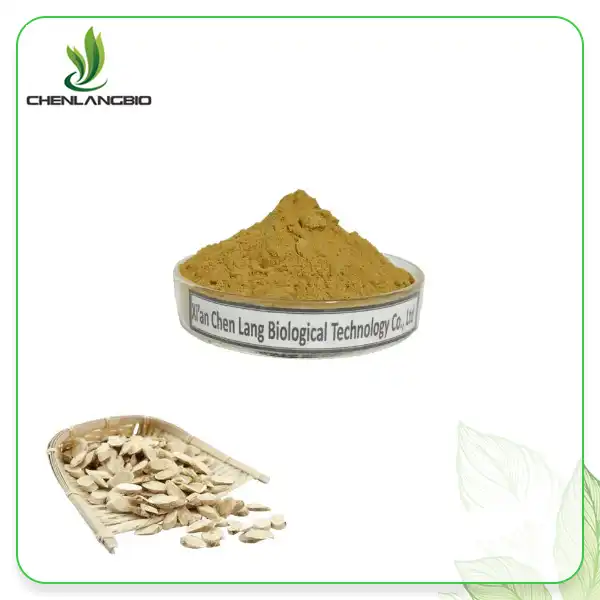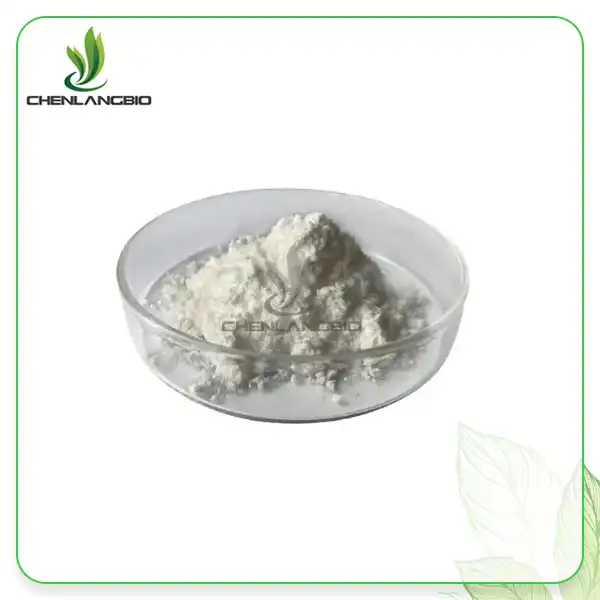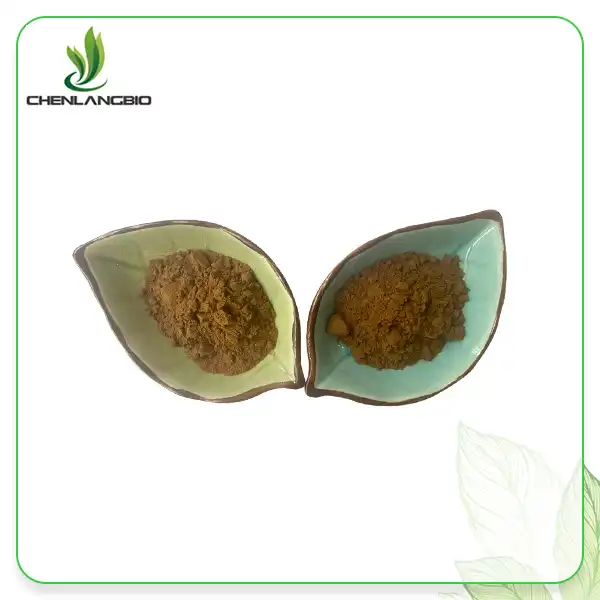How does Hydroxyphenyl Propamidobenzoic Acid Compare To Other Soothing Ingredients
2024-05-27 12:46:39
How Does Hydroxyphenyl Propamidobenzoic Acid Compare to Other Soothing Ingredients
When it comes to skincare, finding the right soothing ingredient can make all the difference, especially for sensitive or irritated skin. Hydroxyphenyl Propamidobenzoic Acid (HPA) is a relatively new player in the field, often compared to other well-known soothing agents like allantoin, bisabolol, and colloidal oatmeal. Let's delve into how HPA stacks up against these ingredients and explore its unique benefits.
Understanding Hydroxyphenyl Propamidobenzoic Acid
Hydroxyphenyl Propamidobenzoic Acid (HPA) is a synthetic compound derived from avenanthramides, which are naturally occurring compounds found in oats. These compounds are renowned for their anti-inflammatory and soothing properties, making them beneficial for skincare, especially for sensitive or irritated skin.

HPA has been developed to offer enhanced soothing benefits compared to natural avenanthramides. It is designed to be more stable and effective, providing significant anti-inflammatory action to calm and alleviate skin irritation.
Compared to other soothing ingredients like allantoin, bisabolol, and colloidal oatmeal, HPA offers unique benefits:
Potent Anti-inflammatory Action: HPA mimics the soothing effects of natural avenanthramides but with enhanced potency, effectively reducing inflammation and irritation.
Antioxidant Properties: HPA possesses antioxidant properties, helping to neutralize free radicals and protect the skin from environmental damage.
Enhanced Penetration: Due to its synthetic nature, HPA can penetrate the skin more effectively, ensuring better delivery of its soothing benefits.
Reduced Allergenic Potential: Synthetic compounds like HPA can have a lower risk of causing allergies or irritation compared to natural extracts, making it a safer option for sensitive skin.
Benefits of Hydroxyphenyl Propamidobenzoic Acid
Hydroxyphenyl Propamidobenzoic Acid (HPA) offers a few advantages for skincare:
Calming Properties: HPA makes strong mitigating impacts, assisting with lessening redness, expanding, and aggravation on the skin. This makes it especially advantageous for alleviating delicate or bothered skin conditions like skin inflammation, dermatitis, or rosacea.
Relieving and Quieting: HPA assists with quieting the skin and reduce uneasiness brought about by different aggravations or natural stressors. It can give help from tingling, consuming, or stinging sensations, advancing in general skin solace.
Cancer prevention agent Security: HPA goes about as a cell reinforcement, searching free revolutionaries and safeguarding the skin from oxidative pressure. This assists with forestalling untimely maturing signs like barely recognizable differences, kinks, and bluntness, while additionally keeping up with skin wellbeing and essentialness.
Improved Skin Hindrance Capability: By diminishing aggravation and supporting skin fix processes, HPA adds to fortifying the skin obstruction. A more grounded skin boundary assists with securing in dampness, forestall dampness misfortune, and shield the skin from outer aggressors.
Similarity with Touchy Skin: Hydroxyphenyl Propamidobenzoic Acid is all around endured by most skin types, including delicate skin. Its engineered nature limits the gamble of hypersensitive responses or bothering, making it reasonable for those with effectively receptive skin.
Adaptability in Plan: HPA can be integrated into different skincare details, including creams, serums, moisturizers, and veils. Its similarity with other skincare fixings takes into account flexible and successful details custom fitted to explicit skincare needs.

Comparing HPA with Other Soothing Ingredients
Allantoin
- Source: Allantoin is derived from the comfrey plant or synthesized in laboratories.
- Benefits: It promotes skin healing, soothes irritation, and stimulates cell regeneration.
- Comparison: While allantoin is excellent for promoting skin healing and regeneration, HPA is more focused on reducing inflammation and itchiness, making it more suitable for acute irritation relief.
Bisabolol
- Source: Bisabolol is a natural component of chamomile.
- Benefits: Known for its anti-inflammatory and antimicrobial properties, it also helps in reducing skin sensitivity and redness.
- Comparison: Both bisabolol and HPA are anti-inflammatory, but bisabolol has the added benefit of antimicrobial properties, which can be useful in preventing infections in irritated skin. However, HPA’s specific mimicry of oat compounds makes it particularly effective for itchiness.
Colloidal Oatmeal
- Source: Derived from finely ground oats, colloidal oatmeal is a traditional remedy for soothing skin.
- Benefits: It forms a protective barrier on the skin, locks in moisture, and provides immediate relief from itching and irritation.
- Comparison: Colloidal oatmeal is a direct natural source of avenanthramides, which HPA synthetically mimics. Both are highly effective in soothing the skin, but HPA can be preferred for its consistency and stability in formulations .
Practical Applications of HPA
Touchy Skin health management Items: Hydroxyphenyl Propamidobenzoic Acid is a phenomenal element for items planned explicitly for delicate skin. Its delicate nature and alleviating properties make it ideal for quieting bothering, redness, and irritation generally experienced by people with touchy skin.
Against Redness Serums and Creams: HPA can be integrated into serums and creams designated at diminishing redness and aggravation in the skin. These plans help to quiet and mitigate bothered skin, giving alleviation from conditions like rosacea or receptive skin.
After-Sun Items: Because of its calming properties, HPA is advantageous in after-sun items like mitigating gels or creams. It assists with mitigating sun related burn, decrease irritation, and calm the skin, advancing quicker recuperation from sun harm.
Hostile to Maturing Plans: HPA's cell reinforcement properties make it a significant fixing in enemy of maturing skincare items. It assists with killing free revolutionaries, safeguard the skin from ecological harm, and forestall untimely maturing signs like scarce differences, kinks, and bluntness.
Hindrance Fix Creams: HPA upholds the maintenance and fortifying of the skin boundary. Details intended to fix and support the skin hindrance benefit from HPA's quieting impacts and its capacity to diminish aggravation, advancing in general skin wellbeing and flexibility.
Post-Method Skincare: After dermatological strategies, for example, synthetic strips or laser medicines, the skin might be touchy and require delicate consideration. Skincare items containing HPA can assist with mitigating post-technique redness and disturbance, advancing quicker mending and recuperation.
Everyday Creams for Aggravated Skin: Lotions figured out with HPA are successful for day to day use, particularly for those with constantly bothered or delicate skin. These creams give hydration while quieting and relieving the skin, assisting with keeping a solid skin obstruction.
Conclusion
Hydroxyphenyl Propamidobenzoic Acid stands out as a powerful soothing agent, particularly effective for reducing itchiness and inflammation. Its ability to mimic the benefits of colloidal oatmeal while maintaining stability and consistency in formulations makes it a valuable ingredient in modern skincare. Compared to other soothing agents like allantoin and bisabolol, HPA offers a unique balance of anti-inflammatory and moisturizing benefits, making it a versatile addition to any skincare routine focused on calming and protecting the skin.
References
- Procoal
- INCI Decoder
- Paula's Choice
- ALODERMA
- INCI Decoder
Send Inquiry
Related Industry Knowledge
- How Does Loratadine Affect the Brain
- How to Give Praziquantel Powder to a Cat
- What Does Sodium Ascorbyl Phosphate Do for Skin
- Does Sodium Ascorbyl Phosphate Oxidize
- How Do You Use Magnesium Ascorbyl Phosphate
- Does Alpha-GPC Affect the Liver
- What is the recommended dosage of 5-HTP?
- What is Reishi Mushroom Extract Powder Good for
- Lutein Extract Powder and zeaxanthin: Eye and vision benefits
- What is Hydroxypropyl Tetrahydropyrantriol in Skin Care









